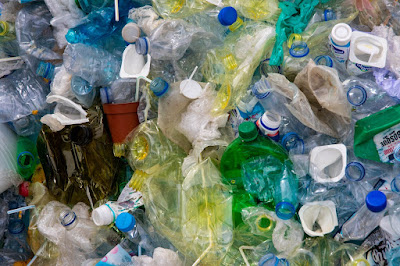The History of Garbage Collection: From Ancient Times to Modern-Day Waste Management
In today's modern world, we often take garbage collection for granted. We simply throw our waste into bins, and it magically disappears.
But have you ever wondered about the history of garbage collection and how it has evolved over the centuries?
From ancient civilizations to the sophisticated waste management systems of today, the management of waste has come a long way. Join me on a journey through time to explore the fascinating history of garbage collection.
Ancient Garbage Collection in Mesopotamia
Our story begins in ancient Mesopotamia, one of the cradles of civilization, around 2000 BCE.
The people of Mesopotamia recognized the need to dispose of waste to maintain cleanliness and prevent the spread of diseases. They employed a simple method of waste collection by dumping garbage outside their cities. Waste was primarily organic, consisting of food scraps, animal remains, and ash from fires.
However, the growing population led to more waste, and the need for organized waste management arose.
The ancient city of Babylon is believed to be the first to introduce a rudimentary garbage collection system. They employed laborers known as "rakers" who would clean the streets, collect garbage, and transport it to designated dumping areas outside the city walls. This early form of garbage collection aimed to maintain cleanliness and hygiene within urban areas.
The Roman Empire's Sanitation Innovations
The Romans were renowned for their advanced engineering and city planning, and waste management was no exception.
In ancient Rome, the collection and disposal of garbage were elevated to a whole new level. The Romans built a network of sewers to carry away wastewater, preventing contamination of their water supply and enhancing sanitation.
The Cloaca Maxima, one of the most remarkable engineering achievements of the time, served as Rome's main sewer system. It not only transported wastewater but also carried away solid waste.
The Romans established public toilets connected to this sewer system, facilitating waste disposal. Furthermore, they employed workers known as "vomitors" to collect garbage from homes and public spaces, keeping the city clean.
Medieval Waste Management in Europe
During the Middle Ages, waste management practices varied across Europe.
In some regions, waste disposal was a collective responsibility, with designated areas outside city walls for dumping garbage. People would throw waste out of their windows, often causing foul odors and unsanitary conditions.
However, in medieval London, a unique system of waste management emerged. The "rakers" were appointed to clean the streets and collect waste from households. They would deposit the garbage outside the city, and it was later used as fertilizer for agricultural purposes.
While this system helped maintain cleanliness to some extent, it also contributed to the spread of diseases due to the lack of proper waste treatment.
Industrial Revolution and the Birth of Modern Waste Management
The industrial revolution brought unprecedented changes to society, including the rise of urbanization and mass production.
With the population boom and increased waste production, cities faced immense challenges in managing garbage. The impact on public health and the environment became a growing concern.
In the 19th century, advancements in waste management emerged. Sir Edwin Chadwick, an English social reformer, played a pivotal role in advocating for improved sanitation and waste disposal. His report, "The Sanitary Condition of the Labouring Population," highlighted the dire consequences of poor waste management on public health. This led to the Public Health Act of 1875 in the UK, which required local authorities to provide proper waste collection and disposal services.
Modern-Day Waste Management Systems
Today, waste management has evolved into a complex and highly organized process.
Advanced technologies and scientific understanding have revolutionized the way we handle garbage. Modern-day waste management systems focus on minimizing environmental impact, promoting recycling, and ensuring public health and safety.
Let's explore some key components of modern waste management
Collection Methods
Garbage collection today involves a systematic approach.
Municipalities provide households with designated bins for different types of waste, such as general waste, recyclables, and organic waste. Waste collection trucks equipped with compactors and separate compartments visit residential areas on scheduled routes to collect the waste. This segregation and collection process aims to maximize recycling and minimize landfill waste.
Recycling and Composting
Recycling plays a crucial role in waste management.
Materials like paper, plastics, glass, and metals are sorted and processed at recycling facilities to be transformed into new products.
Composting, on the other hand, focuses on converting organic waste into nutrient-rich compost.
Both recycling and composting help reduce the amount of waste that ends up in landfills and contribute to a more sustainable approach to waste management.
Waste-to-Energy Facilities
Waste-to-energy (WTE) facilities have gained popularity as a means of waste management.
These facilities utilize technologies like incineration or gasification to convert waste into energy. By burning waste at high temperatures, WTE facilities generate electricity or heat, reducing the volume of waste while producing usable energy.
However, proper emission controls and environmental safeguards are necessary to ensure minimal impact on air quality and public health.
Landfill Management
Although efforts are made to minimize landfill waste, landfills still play a role in waste management.
Modern landfills are designed to prevent environmental contamination by employing techniques like lining the landfills with impermeable barriers to prevent leachate (liquid produced from decomposing waste) from entering the soil and groundwater.
Gas collection systems are also implemented to capture and utilize methane, a potent greenhouse gas produced by decomposing waste in landfills.
Innovations in Waste Management
The field of waste management continues to evolve with advancements in technology.
From automated waste collection systems that use sensors to optimize routes and efficiency to smart waste bins that alert authorities when they need to be emptied, technology is playing a significant role in improving waste management processes.
Additionally, the concept of the circular economy is gaining traction, promoting a shift from the linear "take-make-dispose" model to one that emphasizes recycling, reusing, and reducing waste generation.
Garbage collection has come a long way since the ancient times of simply dumping waste outside city walls.
From the early rakers of Mesopotamia to the sophisticated waste management systems of today, the history of garbage collection reflects our increasing awareness of public health, environmental impact, and resource conservation.
As we continue to grapple with the challenges posed by growing populations and increased waste production, it is crucial to embrace sustainable waste management practices. By promoting recycling, composting, waste-to-energy initiatives, and technological innovations, we can strive for a cleaner and greener future.
Let us remember that responsible waste management is not just a duty but also an opportunity to protect our planet and preserve it for future generations.
(The image source is https://www.pexels.com/photo/building-with-tree-1534057/ )




Comments
Post a Comment